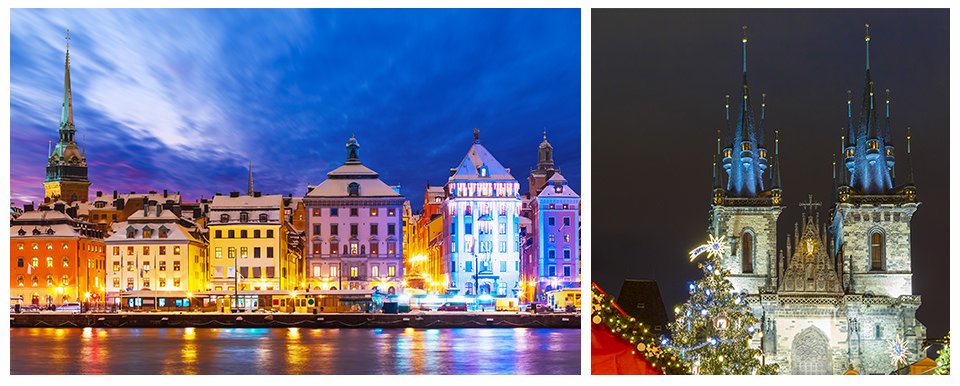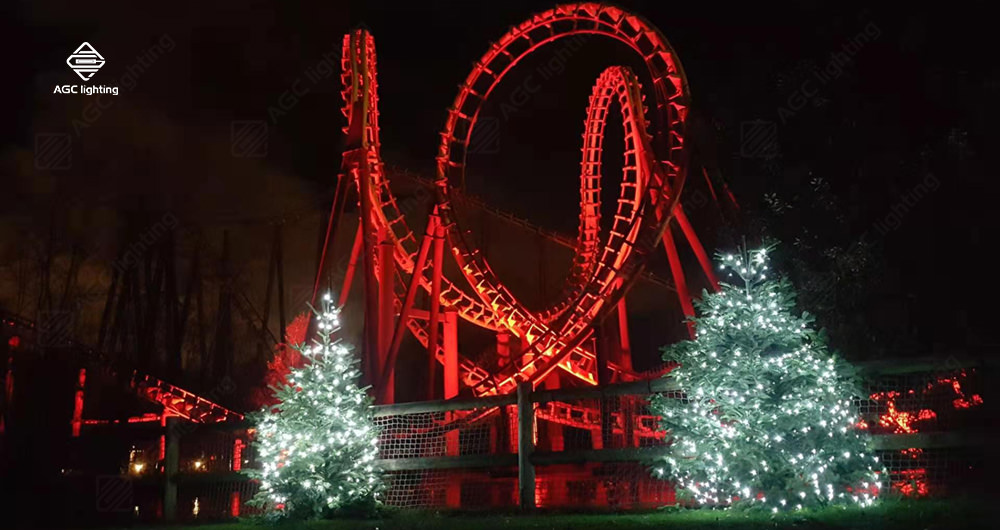To create clear visibility and a concentrated atmosphere, LED lights are white in most places, such as offices, classrooms, warehouses, factories, streets, etc. However, white LED light can’t meet the need for decorations due to the monotonous color. As a result, RGB LED lights are used for ornamenting buildings, parks, facades, plazas, and other places in the dark. RGB LED lights bring a colorful and enjoyable night for people.
Nowadays, RGBW LED lights are used in a wide range thanks to advanced technology. Facade lighting with RGBW, for example, can not only enhance safety and orientation but also boost prestige, making it more attractive for visitors and investors. With the help of intelligent control, RGBW lighting intensity and color are adjustable, achieving energy-saving without any decrease in the grandeur lighting effect. It seems strange and you may scratch your head for what is RGBW LED light as it sounds similar to RGB LED. Please do not worry, this post will show you all you want to know about RGBW LED light.

What is RGBW LED light
RGBW LED light is named after the color of the LED chips it contains. Standard RGBW LEDs consist of red, green, blue, and white LED chips. It is similar to the manufacturing principle of RGB LEDs but with the addition of a white LED chip. Except for emitting red, green, blue, and white colors, RGBW LED light is able to create a wide range of colors by mixing the lights of four chips together in different proportions.
Moreover, large-scale lighting color mixture brings better lighting effects and a higher color rendering index. The color rendering index could be up to 95 in an optimized condition. RGBW LED light is used for applications that need colorful and high-quality lighting. It is mainly used as decoration for buildings and plants at night.
How does RGBW LED work
As mentioned before, an RGBW LED consists of red, green, blue, and white LED chips. A wide range of colors are mixed by altering power on or off of the four basic LED chips. For example, if the red and green channels are opened at the same time while turning off the blue channel, the LED will generate a yellow color. The mixture of red and green light creates the yellow light that we perceive. You may doubt that there are only several colors according to the forward lighting method, but how to create more colors?
As we all know, red, green, and blue are the three primary colors and each color scale has 256 levels. Just the combination of three basic colors can generate as many as millions of different colors. It is not hard to imagine how gigantic the total amount of combination of red, green, blue, and white light is.
To achieve dynamic color modifications, simply controlling the power of LED chips cannot work. The level of each color is related to the lighting intensity. Therefore, multiple colors can be generated by adjusting the output of each LED.
PWM (Pulse Width Modulation) is used to control the output of the RGBW LED light colors that we perceive. PWM controls the voltage of each LED by adjusting the duty cycle, and then the current through each LED is adjusted. The larger the current, the brighter the LED, and vice versa. In consequence, color levels are adjusted. The mixture of red, green, blue, and white LED and different color levels of accomplish dynamic and abundant color shadings.

What are common protocols used to control RGBW lights?
To control the color and brightness of RGBW lights, different protocols or methods can be used. Some main protocols used to control RGBW lights are:
DMX
The DMX512 protocol has long been an industry standard for stage and theater lighting. It transmits detailed lighting instructions digitally from a lighting console to the fixtures. DMX can control each LED color channel separately, making it a popular choice for RGBW lighting.
We provided a facade lighting solution to create a vibrant lighting scheme for a pharmaceutical company. 150W FL39 RGB LED flood lights with DMX control provided rich and saturated colors for unlimited lighting designs.

Bluetooth
This protocol uses Bluetooth technology to connect a smartphone or tablet app to a Bluetooth controller connected to the RGBW lights. Multiple nodes can communicate with each other to propagate commands. Set up is easy but Bluetooth range is limited.
We have used 2.4GHz Bluetooth wireless LED Control system to create amazing RGBW lighting effects for a theme park. The theme park is now more colorful and attractive.

DALI
The DALI (Digital Addressable Lighting Interface) protocol is commonly used in commercial and architectural lighting. DALI messages are sent over two wires to individually address each fixture. DALI has good RGBW support and also allows for dimming and scene control.
Is RGBW LED Light better than RGB?
Generally speaking, RGBW LED light is better than RGB. The addition of a white LED chip contributes to better light quality, less energy consumption, and higher lighting efficiency. It seems that RGB LED light is good enough for meeting the needs of colorful ornament lighting. But we should also take the effects on the environment into account. Climate change is becoming more and more serious, so why not choose an energy-saving RGBW LED to approach sustainable lighting way.
Better light quality
RGB LEDs can produce white light by mixing the primary red, green, and blue lights together in theory. But the mixture includes blending and diffusion of colors, creating fictitious white light. This kind of white light seems to be covered with fog. The hazy light will cause discomfort visual experience to people. In contrast, RGBW LEDs are able to produce cleaner white light and lower saturated colorful light, providing comfortable visual experiences to our eyes. Furthermore, RGBW LED light is capable of producing a wider range of unique color shadings hue and is more flexible in mixing colors due to the addition of white light LED.
Less energy consumption
Traditional RGB LEDs can only produce light at lower brightness. As a result, a larger LED quantity is required to increase lighting brightness. However, adding more LEDs not only increases the cost of manufacture but also increases the energy consumption. In contrast, RGBW LED light produces the same brightness with less LED quantity requirement. Therefore, RGBW LED light is of less energy consumption compared to RGB in the same brightness. Less energy consumption means lower energy costs and save more electricity.
Higher lighting efficiency
RGBW LED light has higher lighting efficiency because of the better light transmittance. Different from certain lighting absorption and blending of RGB LED, RGBW LED light reflects all the light without wasting, and therefore, increases lighting efficiency. In other words, RGBW LED light is capable of offering brighter light with the same energy consumption as RGB LED. Higher lighting efficiency is beneficial for better lighting effects, illuminating the object in a vivid color.
Here is a table about the comparison between RGB and RGBW LED lights:
|
Feature |
RGB LED |
RGBW LED |
|
White light quality |
Hazy, less accurate |
Cleaner, more natural |
|
Color range |
Limited color range |
Wider range, more shades |
|
Color mixing flexibility |
Limited by primary colors |
More flexible with added white |
|
Brightness at lower consumption |
Requires more LEDs for high brightness |
Fewer LEDs are needed for the same brightness |
|
Energy consumption |
Higher |
Lower |
|
Lighting efficiency |
Lower |
Higher |
RGBW LED lighting solution
AGC provides FL39 RGBW LED lights for various applications, including facades, squares, bridges, trees, etc. FL39 supplies several optic options, especially 8deg and 3.8 deg quite narrow beams for over 200m high facade. White light from 2200k to 4000K supports continuous modification of color temperature. RGBW adds chromatic dynamism to the nocturnal scene. The cylindrical screen and honeycomb grill minimize lighting pollution and glare. Smart controls like 0-10V, DALI, Bluetooth, and DMX are available to save energy without cutting down the lighting effect.














